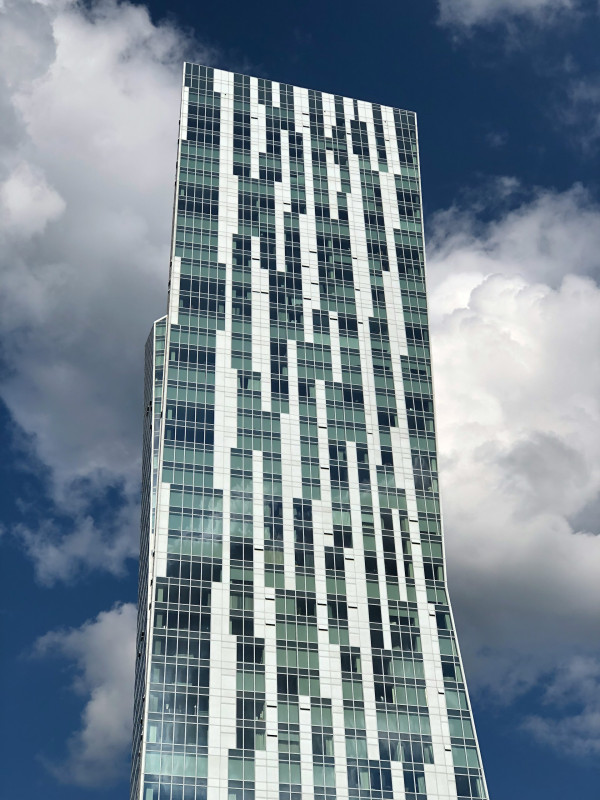What is an EWS1 Form
- Authors
-
-

- Name
- Emily Brook
-

In the wake of the Grenfell Tower fire disaster, new fire safety regulations were introduced for cladding on residential buildings. To ensure external wall systems (EWS) were properly assessed for fire safety, the EWS1 form was introduced in 2019.
The form is evidence that a building with potentially combustible cladding has had a fire safety assessment. When first introduced, they were only required for buildings over 18m or six storeys in height. But in 2020, the rules were changed to include all residential buildings of any height. Then, in August 2021, the rules changed again so an EWS1 is not required for buildings under 18m.
The criteria for when an EWS1 form is required is based more on the type of external wall than a simple binary height. For example, a highly combustible Aluminium Composite Material (ACM) cladding system would require an EWS1 form below 11m, whereas a traditional masonry wall would not require an EWS1 form for any height.
To get an EWS1 certificate, a qualified professional will conduct a fire-risk appraisal of the external wall system or cladding. They will then sign the EWS1 form. One EWS1 form covers the whole building and is valid for five years in England and Wales. In Scotland, separate EWS1 certificates may be needed for each building.
The EWS1 form, also known as an EWS1 certificate, was intended to reassure lenders so that mortgages can be offered on flats within a building that has cladding. The EWS1 form isn’t the same as a fire safety assessment of the building. It is a report for valuers and lenders conducted by a specialist fire engineer of the external wall construction.
Based on that assessment, the building will be assigned one of the following ratings:
- Option A – External wall materials are unlikely to support combustion:
- A1 – There is no cladding that contains significant quantities of combustible material.
- A2 – A risk assessment of cladding has taken place, and no remedial works are required.
- A3 – Cladding is unlikely to support combustion, but remedial works may still be needed.
- Option B – The cladding contains combustible materials:
- B1 – The fire risk is low enough that remedial works are not required.
- B2 – The fire risk is high enough to require remedial work.
EWS1 and mortgages – what’s the latest?
Six of the UK’s biggest banks have updated their policies following new guidance published in December 2022 by RICS, which guides valuers on how to take into account any agreed remediation funding and timelines when forming an opinion on the value of properties in blocks of flats with cladding.
The lenders said they would offer mortgages on properties in blocks above 11 metres where there are safety issues, providing an agreed remediation plan funded by either the government or a developer is in place. While some lenders may lend to leaseholders who are covered by protections in the Building Safety Act, even where a plan is not in place.
However, there are some variations in banks’ policies. For example, Santander will reportedly consider mortgage applications in England on properties in buildings “irrespective of the building’s height or whether remediation work has commenced, provided the correct evidence is shared.” It won’t require an EWS1 form unless specifically requested. Meanwhile, Lloyds Banking Group stated in December that it will no longer require an EWS1 form to “progress applications” for properties in England that are in buildings five storeys or higher.
While this is positive news for some people living or wanting to sell homes affected by this issue, it’s a good idea to consult with a fee-free mortgage broker who can provide guidance on each lender’s position.
My building does not have cladding, do I need an EWS1 form?
If your building doesn’t have cladding or a wooden balcony, then it should not require an EWS1 form. However, don’t assume you don’t have cladding. Buildings can appear as if they are built from traditional materials but may actually have a brick or stone slip external wall system, which is classed as cladding. Even some brick or stone-built properties may need an EWS1 form if they have decorative panels that require a fire assessment.
When do I need an EWS1 form?
If you are the leaseholder or freeholder of a property in a building that requires an EWS1 form, you may need it when dealing with mortgage valuers—for example, when selling your home or remortgaging with a new provider. EWS1 certificates are not a legal requirement, but mortgage lenders may require one to offer a mortgage on properties within the building.
An EWS1 certificate allows valuers to know that your building has undergone a safety assessment and helps them to put a value on the property while considering whether remedial works are needed.
Which lenders don’t require an EWS1 form?
Lloyds Banking Group has stated it will no longer require an EWS1 form to “progress applications” for properties in England that are in buildings five storeys or higher. For the most up-to-date information, consult a fee-free mortgage broker.
Who arranges an EWS1 certificate?
It is the building owner’s responsibility to arrange the fire safety assessment and subsequent EWS1 certificate. Leaseholders, valuers, and lenders cannot arrange it—only the legal owner of the building can do so.
The Fire Safety Act 2021 stipulates that a Fire Risk Assessment of a residential building must include any cladding. If your building’s Fire Risk Assessment is several years old, it won’t have included the external wall system. It is the owner’s legal duty to ensure it is up-to-date.
If the freeholder refuses to arrange for an EWS1 form, you should group with other leaseholders and write to the owner collectively. This can apply additional pressure to resolve the issue. If this fails, you can approach your local council for assistance.
How do I get hold of my building’s EWS1 form?
If your building has an EWS1 form, you should be able to get it from the owner. Alternatively, it may be available on the Building Safety Information Portal, though there have been delays in uploading all existing forms.
How much does an EWS1 form cost?
The cost of the initial fire risk assessment varies depending on the building’s size and the amount of cladding that needs assessment. Typically, it costs at least £6,000 but can rise above £20,000 for complex situations.
The freeholder is responsible for the cost, but they may pass a portion onto leaseholders depending on the terms of the lease. If fire risk assessments are not explicitly mentioned, other clauses in the lease may allow costs to be passed on.
If leaseholders are asked to pay, the cost is typically included in the annual service charge. Getting a copy of the EWS1 form shouldn’t cost you anything.
Do I need an EWS1 to remortgage?
If the property you want to remortgage is in a building with cladding, your lender may ask for the EWS1 form. This varies by lender and factors such as the building’s height and cladding coverage.
If there is unsafe cladding on my building, what then?
If your building has unsafe cladding, it will be marked as either B1 or B2 on the EWS1 form:
- B1 – Risk isn’t significant enough to require remedial work.
- B2 – Cladding needs remedial work to make it safe.
For buildings over 11m, the government will cover the cost of unsafe cladding removal via a fund paid into by major housing developers.
For buildings under 11m, leaseholders are still liable for remedial work costs, but the government is working on plans to support residents in lower-rise buildings.